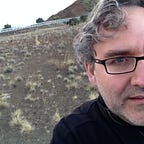The Simulation Hypothesis is really Plato’s Cave
I would think this should be obvious. However, there seems to be enough people invoking the simulation hypothesis without realizing that it amounts to a modern retelling of the story of Plato’s cave, that I felt it worth writing this article. This includes the philosopher who is the author of the most recent incarnation of this idea, Nick Bostrom. Neither in his paper nor in any of the more popularized articles on the subject could I find a single reference to Plato. Perhaps it was thought too obvious to state? However I think it’s worth saying since it exposes the logical consequences of this line of reasoning. Consequences which Plato understood and explained several millennia ago. That is, that idealized forms (or relational information) are the true foundation of reality.
In case you are unaware, the simulation hypothesis in short proposes that since the construction of a convincing simulated reality which can host consciousness will in all likelihood become relatively easy (and cheap) in the future, that it is more likely that we currently living in a simulation than in a base reality. This is because the number of convincing simulated realities will be many orders of magnitude larger than existing base realities. Therefore the probability that we are currently operating in a simulated reality is orders of magnitude higher than the probability that we are living in a physical base reality. There are of course several versions of this reasoning, however I think the key point might be understood from a thermodynamic or minimal energy point of view. If a future state of technology exists where simulated reality requires less energy than base reality to host consciousness, then statistical thermodynamic equilibrium will require that the overwhelming majority of what we call sentient consciousness must exist in a simulation.
Plato’s theory of forms claims that non-physical idealized forms or ideas represent the most accurate reality and that physical objects derive their ‘essence’ from their relationship to these forms. These forms are often described as models or templates from which imperfect copies or projections are made in the physical world. In the Republic, the well-known cave analogy illustrates this relationship. He imagined that there are several prisoners trapped in a cave deep underground. Their bodies and heads are held immobile with chains and brackets against one wall and on the other are projected shadows of objects, which are cast by a large torch held behind their heads. The prisoners only know this reality and so mistake the shadows they see projected on the wall for reality itself. Eventually one of the prisoners escapes and sees the real objects being projected and realizes the nature of the deception. This freed prisoner is likened to the enlightened philosopher. The prisoners are all of humanity and the shadows are what we take to be physical reality.
Returning to the simulation hypothesis, If we look at it’s central proposition, from another point of view what it reveals is that if our experience of reality is so easily simulated then in fact perhaps we are incorrectly ascribing the quality of ‘base reality’ to the physical world. That in fact the ‘base reality’ is the data, quantitative relationships or in the Platonic terminology, idealized forms. One can see this more clearer if we consider the likelihood of a given simulation generating it’s own native simulation of its reality. This seems all but assured given the technological assumptions. Thus we have the case of an infinite recursion of simulations, perhaps with no real base physical reality, or a base physical reality of little importance.
But modern science has been driving us in this direction for quite a while now. There is the radical ascendancy of maths and the belief that it somehow represents the “true” nature of reality. This itself was a product of the discovery of the quantum wave function, for which physicality was explicitly lacking and whose properties could only be understood in terms of math. Then there has been the growing understanding of the organizational role of information, and its function in the generation of living systems. I recently wrote a long article on Plato and modern physics from a Baha’i point of view, which dwelt at length on these ideas.
Finally I thought it worth adding that a commenter on another article of mine, recently pointed me to a rather entertaining and well researched youtube video. This video makes the link between the simulation hypothesis and Plato clear. I do have several quibbles with this video. I think it’s claims go way beyond what can be confidently established by science. This flows from an incorrect conclusion it makes about the role of consciousness and the collapse of the quantum wave function. It, like countless others, confuses the nomenclature of the word ‘observation’ to assume that consciousness is required. This is a highly debatable claim. The important point is that one thing interacts with another in a way to ‘collapse’ the wave function. It is not clear if a ‘brain’ or thought is required.
In any case I would argue that if you are ready to accept the truth of the simulation hypothesis then you really should accept Plato’s proposition that the true ‘base reality’ are the eternal idealized forms. This seems the logical consequence of this line of reasoning.
Links to my other articles on religion and science:
Plato, Modern Physics and Baha’u’llah
One Physicist’s first Look at Abdu’l-Baha’s Tablet of the Universe
The Known and Unknown: Physics and the Revelation of Baha’u’llah
Does the singularity of God require the singularity of Religion?
The Spirit of Faith and Eternal Life
A Talismanic View of Evolution
Muhammad ibn ʿAbd al-Wahhab and Shaykh Ahmad
The fetish of exaggerated individualism is driving us to extinction.
Links to Short Stories:
Igor (part I), The Refugee (part II), Marion-Jack (part III),
